Interactive Installation for Intel
Touch Screen Installation for Tradeshow
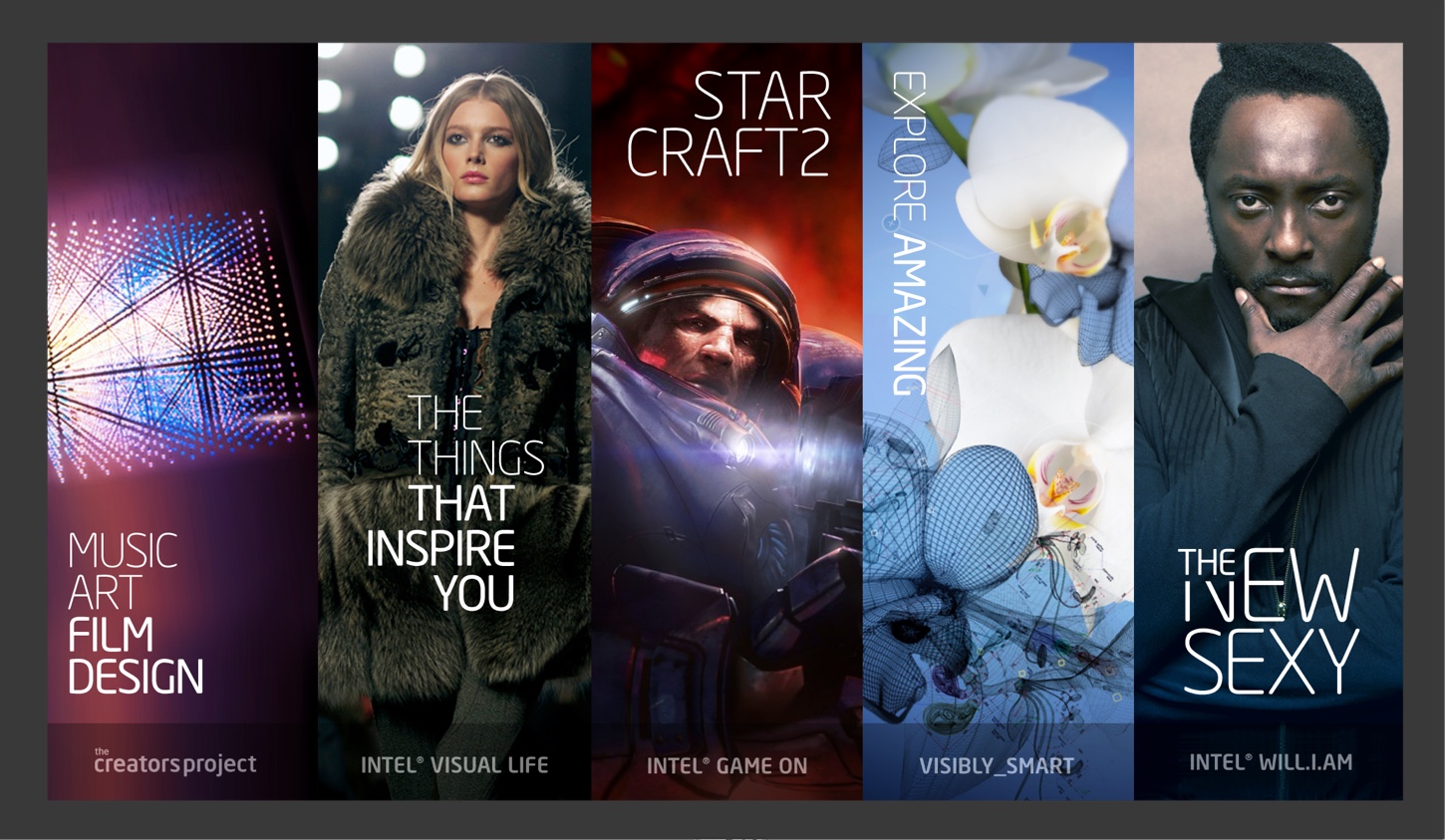
Touch Screen Installation
Intel wanted an interactive touch screen that could be displayed at tradeshows and events. The purpose of this product was to highlight how Intel’s technology had been used in many avenues of popular culture that people may not have realized. The touchscreen installation showcased how Intel, as an ingredient brand played an important part in making movies, music, architecture, and fashion styling.
I worked as an Interactive Designer on the Creative Techonology team at Razorfish, where Intel was a client. I worked on both the design and development of this project.
Working with an Existing Framework
To meet an aggressive timeline (3 days total, from start to finish) I worked with the Director of Creative Technology to determine if we could leverage an existing framework, in order to complete the build in time for the event that it was intended to be displayed at.
We found an existing framework that had potential to work for the goals of this product. I started sketching to work towards a design that would meld the goals of the creative brief and the specified content categories, with the functional capabilities of the code framework. The following sketch is the design that we arrived at to meet project goals, within the existing functionality of the code framework.
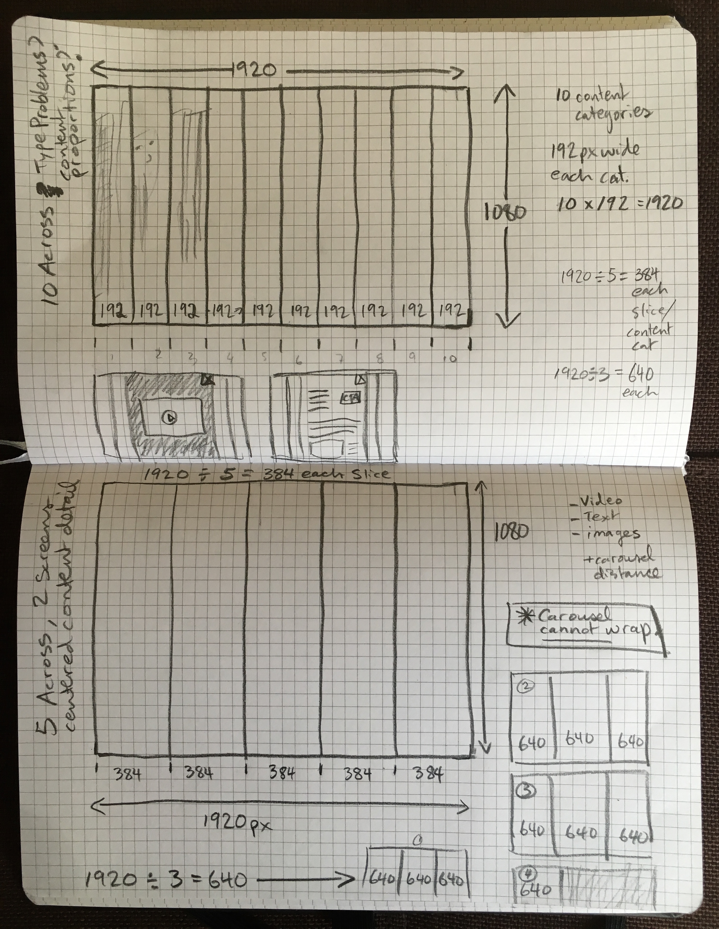
Visual Design
I worked with an art director to figure out a type treatment that would work well, and match the style of the larger Intel campaigns. I helped by laying out the additional screens, before moving onto the production design. I cut all the assets and checked them into the repository to make the build.
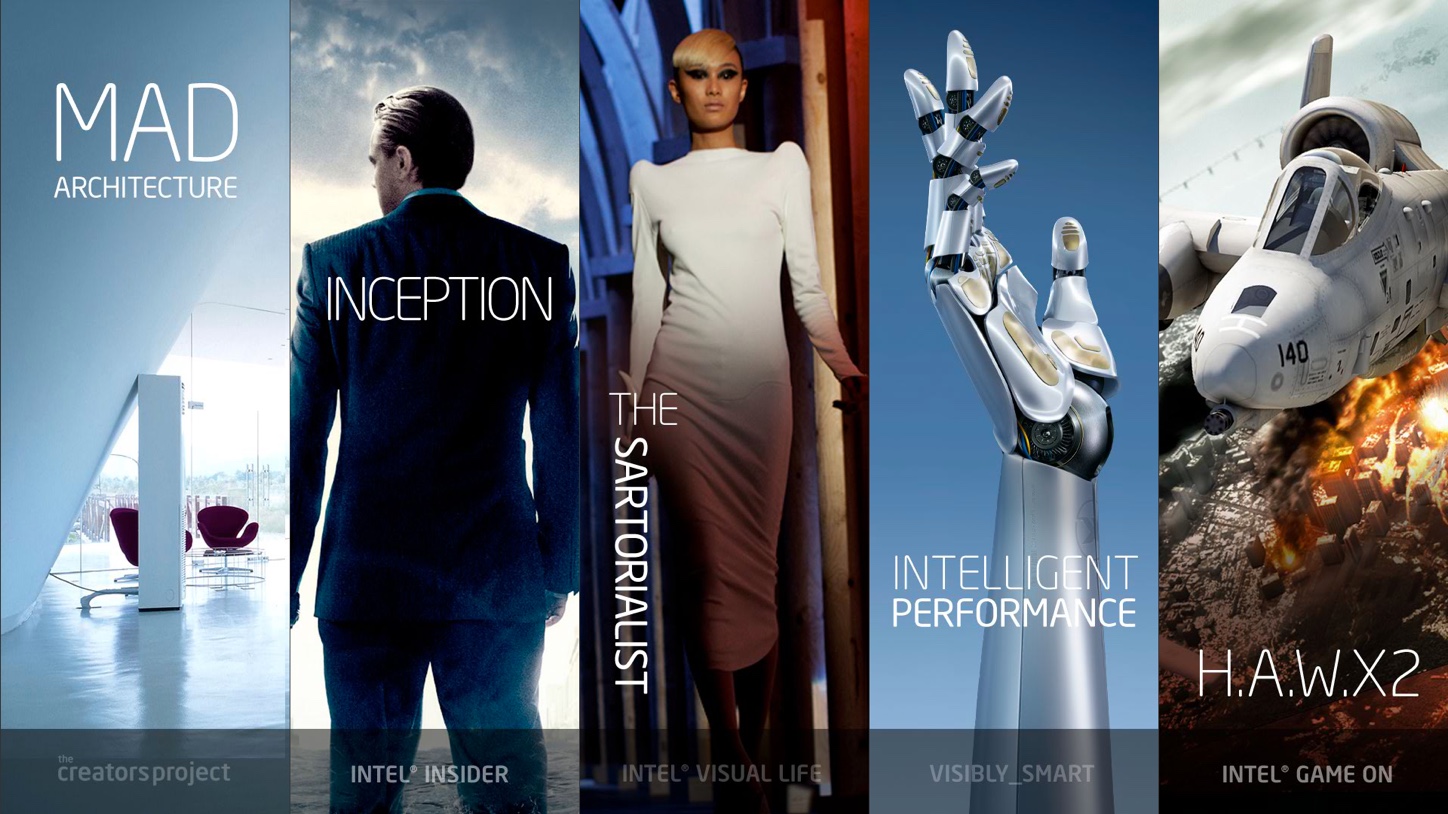
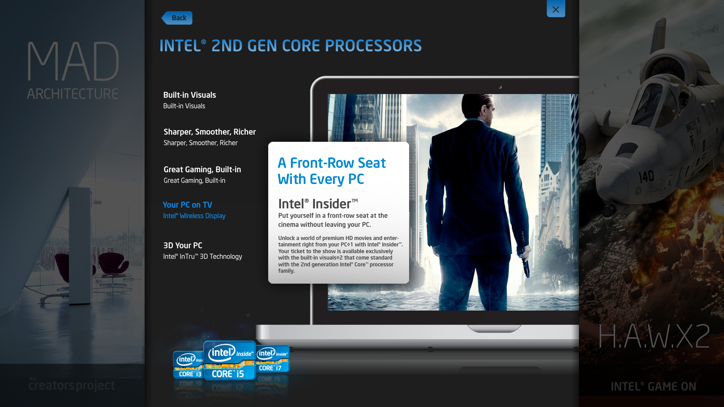
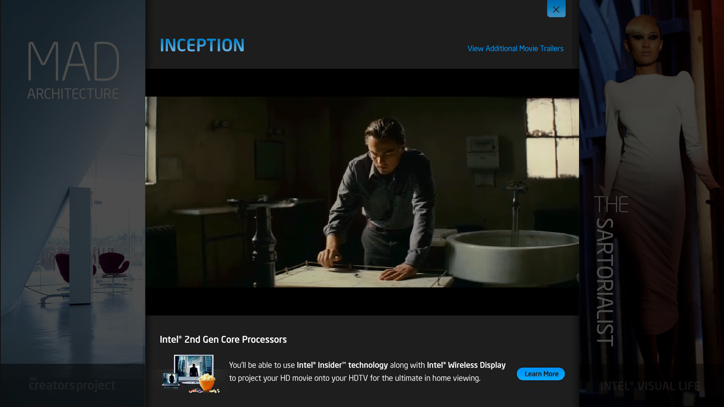
Adding Assets to Build & Animating
I added the assets to the build by naming them sequentially and assigning them to the appropriate content type in a JSON file. I used the TweenMax libray to animate the transitions. All of the easing motion used for this project is based off Robert Penner's Easing Functions.
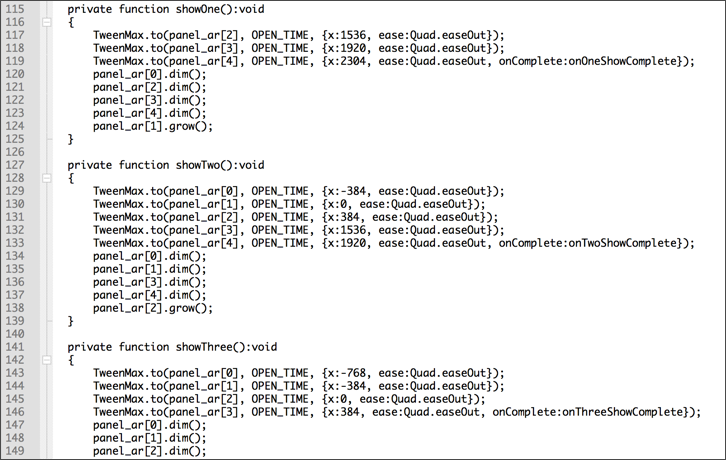
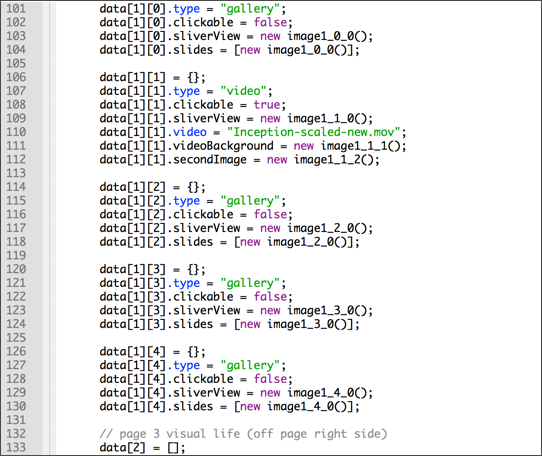
Testing the Build & Iterating on Motion
This video shows me testing the build. As I iterated on the motion design in the code, I tested the interactions on the full size screeen to make sure that the timing felt appropriate at the scale of the final product.